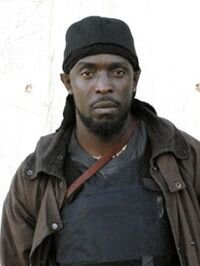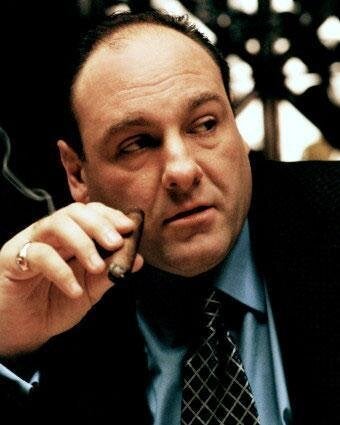Contains Spoilers *****
Last week the Twittersphere erupted in a single collective yowl of shock and disbelief. The cause - the penultimate episode in series three of Game of Thrones, and the notorious 'Red Wedding'; a scene which saw several integral and beloved characters despatched in a plot twist as raw and jagged as the steely blades which facilitated it.
In light of this, I have taken the chance to present... the top 5 most shocking TV demises:
5. 'Dirty' Den Watts - Eastenders
The original landlord of the Queen Vic pub, Den was Eastenders' first bad boy. He was, to be frank, a compulsive liar, cheat and small time gangster who lurched from scandal to scandal, cynically manipulating all those around him. He got his teenage daughter's best friend pregnant before starting a feud with her irate mother, and he chose Christmas Day as the opportune moment to present his wife with divorce papers.
When his moment finally came - you remained, to the very last, convinced he was going to get away with it - right up to the point where the camera showed the barrel of a smoking gun, and you heard the plop of his body as it fell into the water. (He was, however, resurrected almost 15 years later)
4. DCI David Bilborough - Cracker
The young, motivated and ambitious DCI won the respect of his colleagues for his tough, hands on, but ultimately fair minded approach to policing and leadership. Frenetically committed, he was rushed off his feet trying to balance the hectic demands of the job with the responsibilities of family life - a young bride and newly born baby boy.
In the episode 'To Be A Somebody' - psychopath Albie Kinsella draws Bilborough out, causing him to give chase through the streets, before luring him into the confines of an anonymous terraced house, at which point Albie steps from the shadows and thrusts the blade of a kitchen knife into Bilborough's abdomen.
Albie flees, but the DCI clings to life, crawling across the floor, and then out onto the street desperately trying to identify any landmarks which might disclose his location. Bleeding profusely he manages to radio in for help, and still has the presence of mind to give a clear account of the crime, his own murder, in one of the most harrowing, wheezing expiration scenes ever performed - "This...is a dying man's statement..."
3. Omar Little - The Wire
Omar Little was, in many ways, a modern day folk hero. He roamed the streets of Baltimore, spending his days relieving the most dangerous drug dealers of their cash with an almost Robin Hood style joviality. Omar retained a strong streak of morality, however, never targeting those who were not "in the game". Make no mistake, though - Omar was a deadly proposition, universally feared for his ruthlessness and cunning.

And, having engaged in a series of elaborate, lethal feuds with the most deadly crews of the neighbourhood, Omar was always in danger of developing a sudden chalk outline. But when his demise finally came, it was made all the more shocking by the fact that it wasn't inflicted by one of the formidable heavies he had so frequently tussled with, but instead by a young boy who shot him, from behind, in the back of a convenience store - a boy who was, for all intents and purposes, the product of the same culture of violence Omar had so vividly helped cultivate.
2. Yvonne Atkins - Bad Girls
Yvonne Atkins was the top dog of Larkhall Prison's G wing from the very moment of her arrival. A natural born rebel, she was unable to tolerate any authority except her own - and embroiled the other prisoners in a series of scams and subversions which made her the principle target of the screws, especially the slippery and loathsome Mr Fenner. Yvonne possessed magnetic charisma, and a wry, mischievous sense of humour, but these qualities were underpinned by a steely ruthlessness and ferocious loyalty to friends and family.
As Bad Girls went into its fifth series, the feud between Mr Fenner and Yvonne graduated to murderous proportions. In the end the savvy, cockney villainess was out-played by her sinister antagonist - Fenner lured Yvonne to an old 'hanging' cell where he locked her in and sealed her fate. The scene is particularly difficult to watch for it is unnerving to see such a strong and charismatic character rendered so helpless and powerless. As the oxygen in the room diminishes, so does the light from Yvonne's dying match, while, all the while, she pleads and whimpers for mercy. None is forthcoming.
1 Tony Soprano - The Sopranos
A controversial choice for the top spot, perhaps. In the series finale Tony Soprano is seen happy, talking with his family over a meal in a local restaurant, at which point the scene goes to black, before the end credits start to roll. It felt like the least shocking and most banal end conceivable to the high powered and explosive Mafioso rollercoaster that was The Sopranos. But nothing was further from the truth.
In fact what director and writer David Chase had orchestrated was one of the most disturbing and compelling dramatic denouements ever to grace our televisions. A deconstruction of that final scene shows that Tony looks up from his table each time the door of the restaurant opens, each time someone comes in. We, the viewers, then get to see the person who comes through the door from Tony's perspective.

However, in the final moment, he looks up, and when we should be seeing the person who is coming through the door from the Soprano boss' point of view, what we in fact see is a blank, black screen indicative of nothing at all. The blackness, of course, tells us that Tony has ceased to see; we, the audience have just experienced his murder from the first person perspective of Tony himself - rather than seeing it from the outside. We never see the body of the slain gangster, nor do we see the guns in the hands of the people who have killed him. And yet - the total blackness which extends for a few seconds before the end credits begin to role - is more disturbing than any external and visceral depiction of violence might have been.